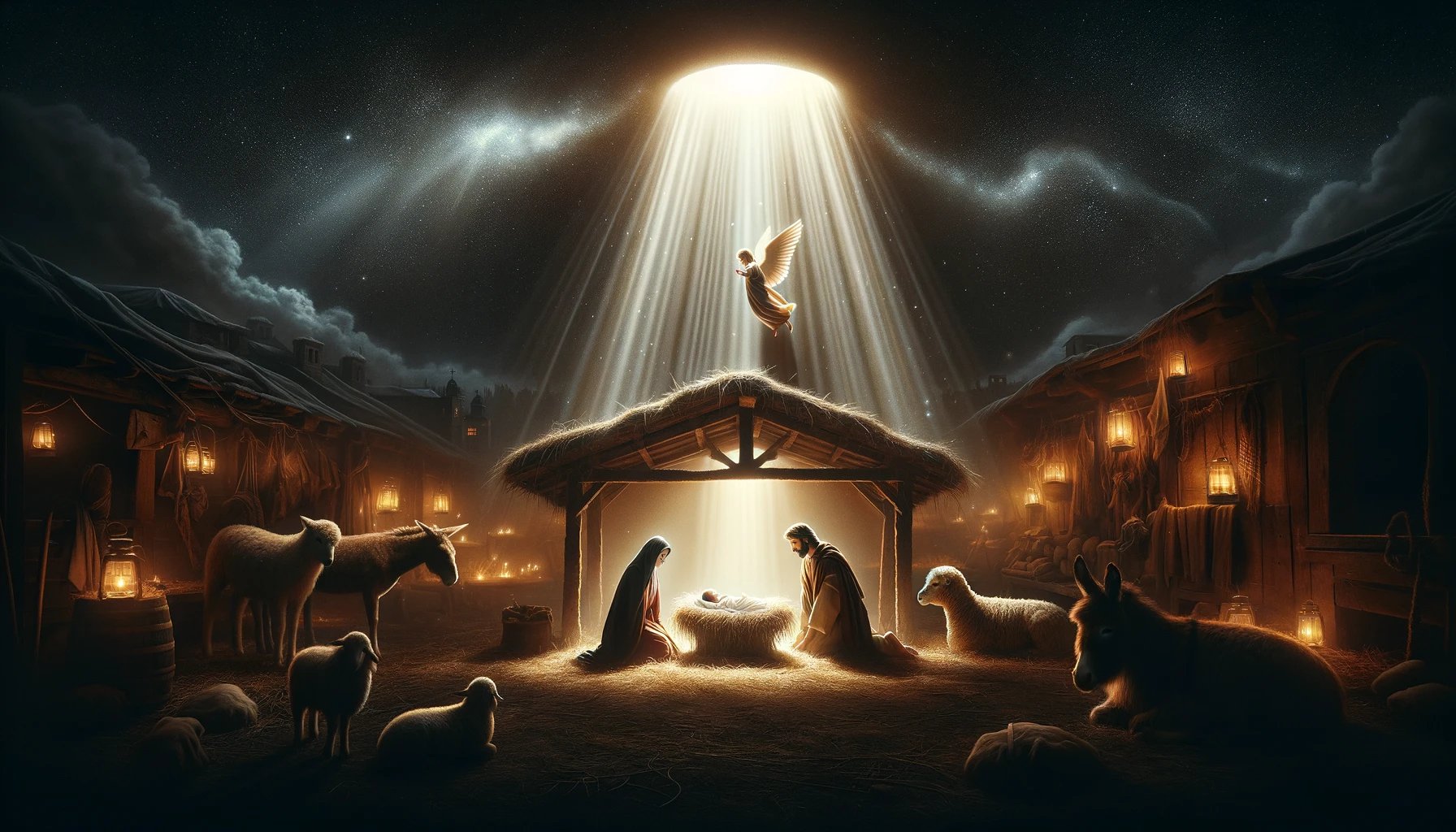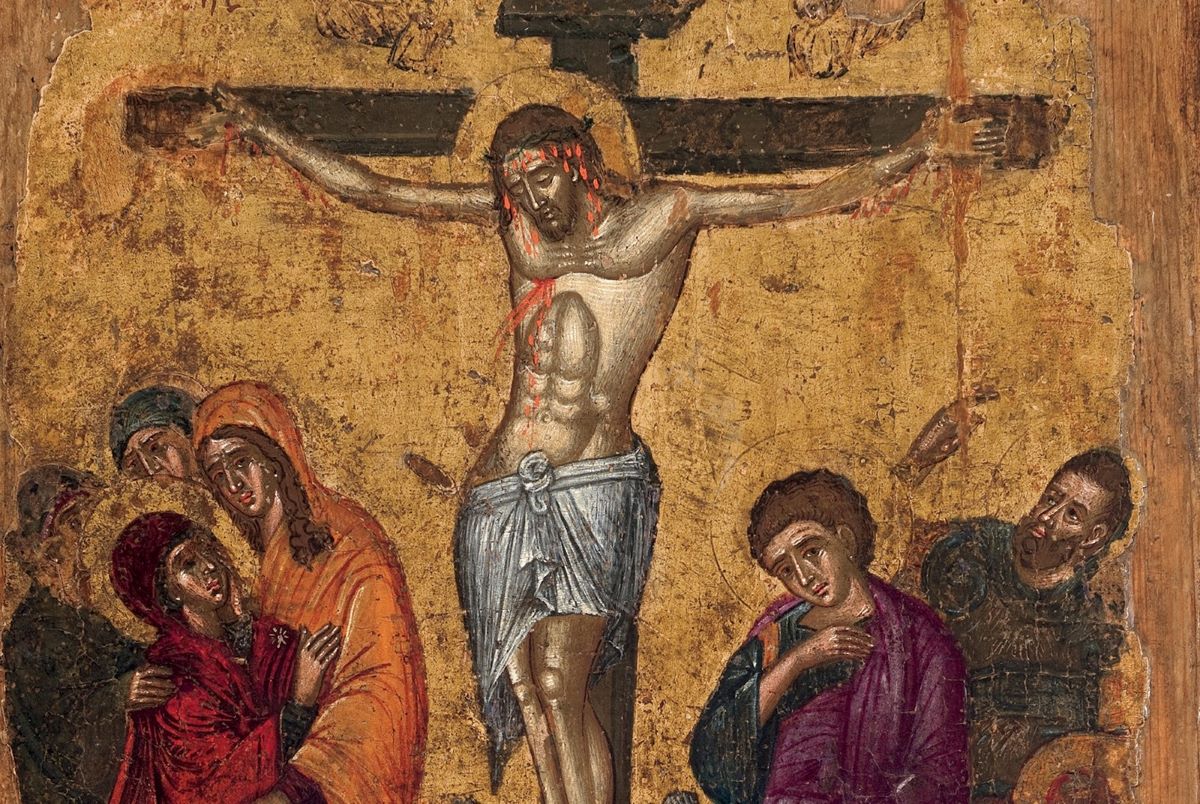Home>Special Themes>What Is Important About Advent


Special Themes
What Is Important About Advent
Published: February 14, 2024
Jason DeRose, Managing Editor at Christian.net, uses his expertise in religion and journalism to deepen understanding of faith's societal impacts. His editorial leadership, coupled with a strong academic background, enriches the platform’s diverse content, earning him recognition in both journalism and religious circles.
Discover the significance of special themes in Advent and how they enhance the spiritual journey. Uncover the importance of special themes in celebrating the Advent season.
(Many of the links in this article redirect to a specific reviewed product. Your purchase of these products through affiliate links helps to generate commission for Christian.net, at no extra cost. Learn more)
Table of Contents
The Meaning of Advent
Advent, derived from the Latin word "adventus," meaning "coming" or "arrival," is a significant period observed by Christians around the world. It marks the beginning of the liturgical year and encompasses the four Sundays leading up to Christmas. This sacred season is characterized by anticipation, preparation, and reflection, as it symbolizes the dual nature of Advent: the commemoration of the birth of Jesus Christ in Bethlehem and the anticipation of his second coming.
During Advent, believers are encouraged to embrace a spirit of expectancy and hope, reflecting on the profound significance of Christ's incarnation and eagerly anticipating his promised return. This period serves as a poignant reminder of the fulfillment of ancient prophecies and the fulfillment of God's covenant with humanity.
Advent is a time of spiritual introspection and renewal, prompting individuals to reevaluate their faith, values, and priorities. It encourages believers to prepare their hearts and minds for the celebration of Christ's birth while also contemplating the profound implications of his redemptive mission.
The observance of Advent is symbolized by the lighting of candles on an Advent wreath, with each candle representing different aspects of the spiritual journey towards the celebration of Christ's birth. The progressive lighting of the candles symbolizes the increasing brightness and hope brought by the imminent arrival of the Messiah.
In essence, Advent serves as a period of profound significance, inviting individuals to embrace the virtues of faith, hope, love, and joy. It encourages believers to reflect on the transformative power of Christ's birth and to cultivate a sense of spiritual readiness for his second coming.
This sacred season also fosters a sense of communal unity and shared anticipation, as believers come together to prepare their hearts and minds for the joyous celebration of Christmas. It serves as a poignant reminder of the enduring promise of God's love and the profound impact of Christ's redemptive mission on humanity.
In summary, Advent embodies the profound significance of Christ's birth and the anticipation of his second coming, serving as a period of spiritual reflection, anticipation, and communal celebration for Christians worldwide.
Read more: Why Is Advent Important?
The History of Advent
The history of Advent can be traced back to the early centuries of Christianity, with its origins rooted in the practices of the Western Church. The concept of Advent as a distinct liturgical season began to take shape in the 4th and 5th centuries, evolving from a period of fasting and spiritual preparation into a structured observance that symbolized the anticipation of Christ's birth.
During the early Middle Ages, the duration of Advent varied across different regions, with some communities observing a period of fasting and penance that lasted from November 11th, the feast of St. Martin, to Christmas Day. Over time, the observance of Advent was standardized to encompass the four Sundays preceding Christmas, aligning it with the liturgical calendar and emphasizing the symbolic significance of the number four in Christian tradition.
The historical development of Advent was influenced by a desire to create a dedicated period for spiritual reflection and preparation, allowing believers to engage in acts of repentance, prayer, and almsgiving as they awaited the celebration of Christ's birth. This period of anticipation was marked by a sense of solemnity and expectation, serving as a poignant reminder of the profound significance of the Incarnation and its transformative impact on humanity.
The evolution of Advent also saw the introduction of distinct liturgical colors and symbols, such as the Advent wreath and the use of purple or blue vestments, which became integral elements of the season's observance. These visual and symbolic representations served to deepen the spiritual significance of Advent, providing believers with tangible reminders of the themes of hope, peace, joy, and love that characterize this sacred season.
Throughout history, the observance of Advent has continued to evolve, incorporating diverse cultural traditions and practices while remaining steadfast in its emphasis on spiritual preparation and anticipation. Today, Advent stands as a cherished tradition within the Christian faith, inviting believers to embark on a journey of spiritual renewal and expectation as they prepare to celebrate the birth of Jesus Christ.
In summary, the history of Advent is a testament to the enduring significance of this sacred season within the Christian tradition, reflecting the evolution of its observance and the enduring themes of anticipation, preparation, and spiritual reflection that continue to resonate with believers around the world.
The Advent Wreath and its Symbolism
The Advent wreath, a cherished symbol of the Advent season, holds profound significance within Christian tradition. Comprised of a circular wreath adorned with evergreen foliage and four candles, the Advent wreath serves as a visual representation of the spiritual journey towards the celebration of Christ's birth.
The circular shape of the wreath symbolizes eternity and the unending nature of God's love and grace. It serves as a powerful reminder of the timeless nature of Christ's redemptive mission and the enduring hope that his birth brings to humanity. The evergreen foliage, with its vibrant and unchanging nature, represents the everlasting life found in Christ and the promise of renewal and eternal salvation.
The four candles adorning the Advent wreath are lit sequentially on each of the four Sundays of Advent, with each candle representing a distinct theme: hope, peace, joy, and love. The lighting of these candles symbolizes the increasing brightness and anticipation as the Advent season progresses, culminating in the illumination of the central Christ candle on Christmas Eve or Christmas Day.
The first candle, often referred to as the "Prophet's Candle," symbolizes hope and the eager anticipation of the Messiah's arrival. It serves as a poignant reminder of the prophetic promises of the Old Testament and the steadfast hope that believers hold for the fulfillment of God's redemptive plan.
The second candle, known as the "Bethlehem Candle" or the "Peace Candle," represents the peace brought by the Prince of Peace. It embodies the tranquil anticipation of Christ's birth and the profound peace that his presence brings to the world.
The third candle, often called the "Shepherd's Candle" or the "Joy Candle," symbolizes the joyous anticipation of the Good News brought by the birth of Jesus. It serves as a radiant beacon of joy, illuminating the path towards the celebration of Christ's arrival.
The fourth candle, known as the "Angel's Candle" or the "Love Candle," embodies the boundless love of God manifested through the gift of his Son. It represents the deep and abiding love that permeates the Advent season, inspiring believers to reflect on the transformative power of God's love.
In essence, the Advent wreath and its symbolism encapsulate the essence of the Advent season, inviting believers to embark on a journey of spiritual preparation and anticipation. It serves as a tangible and evocative representation of the timeless themes of hope, peace, joy, and love, fostering a sense of communal unity and shared anticipation as believers prepare to celebrate the birth of Jesus Christ.
The Advent wreath stands as a cherished tradition within the Christian faith, serving as a poignant visual reminder of the profound significance of Christ's birth and the enduring themes of hope, peace, joy, and love that define the Advent season.
The Importance of Hope, Peace, Joy, and Love in Advent
The significance of hope, peace, joy, and love in Advent extends far beyond mere sentiments; these profound themes form the cornerstone of the Advent season, infusing it with profound meaning and spiritual depth.
Hope, the first candle lit on the Advent wreath, symbolizes the eager anticipation of the Messiah's arrival. It serves as a poignant reminder of the prophetic promises of the Old Testament and the steadfast hope that believers hold for the fulfillment of God's redemptive plan. This theme of hope resonates deeply with individuals, inspiring them to embrace a sense of optimism and expectancy as they prepare to celebrate the birth of Jesus Christ.
Peace, represented by the second candle, embodies the tranquility and harmony brought by the Prince of Peace. It serves as a powerful symbol of the profound peace that Christ's presence brings to the world. During Advent, the theme of peace encourages believers to seek inner serenity and to reflect on the transformative impact of Christ's birth, fostering a sense of calm and spiritual renewal.
Joy, symbolized by the third candle, radiates with the anticipation of the Good News brought by the birth of Jesus. It serves as a radiant beacon of joy, illuminating the path towards the celebration of Christ's arrival. The theme of joy in Advent inspires believers to embrace a spirit of exuberance and gratitude, celebrating the profound significance of Christ's birth and the boundless joy it brings to humanity.
Love, embodied by the fourth candle, represents the boundless love of God manifested through the gift of His Son. It symbolizes the deep and abiding love that permeates the Advent season, inspiring believers to reflect on the transformative power of God's love. This theme of love encourages individuals to cultivate a spirit of compassion, generosity, and empathy, mirroring the unconditional love demonstrated through the birth of Jesus Christ.
In essence, the importance of hope, peace, joy, and love in Advent transcends individual emotions, encompassing the foundational principles of the Christian faith. These themes serve as guiding beacons, illuminating the spiritual journey of believers as they prepare to celebrate the birth of Jesus Christ. They foster a sense of communal unity and shared anticipation, inviting individuals to embrace the virtues of faith, hope, love, and joy, and to reflect on the profound significance of Christ's redemptive mission.
Advent Traditions and Practices around the World
Advent traditions and practices vary widely across different cultures and regions, reflecting the rich tapestry of global Christian observance. These diverse customs serve as a testament to the enduring significance of the Advent season and the profound impact of Christ's birth on communities worldwide.
In Germany, the tradition of the Advent calendar has been cherished for generations. Families and individuals mark the days leading up to Christmas by opening numbered doors on a special calendar, often revealing small gifts, treats, or religious verses. This practice fosters a sense of anticipation and excitement, creating a daily ritual that builds towards the joyous celebration of Christ's birth.
In Scandinavian countries, the observance of Advent is often accompanied by the tradition of the Advent star. Families display intricate, multi-pointed stars in their windows, symbolizing the Star of Bethlehem and serving as a visual reminder of the light and hope brought by the birth of Jesus. This tradition illuminates the winter nights with a sense of warmth and spiritual significance, uniting communities in shared anticipation.
In Latin American cultures, the observance of Advent is marked by vibrant processions and celebrations known as Las Posadas. These reenactments of Mary and Joseph's journey to Bethlehem are accompanied by music, prayers, and communal gatherings, fostering a sense of solidarity and spiritual reflection. Las Posadas serve as a poignant reminder of the humble origins of Christ's birth and the enduring faith of the Christian community.
In Ethiopia, the observance of Advent, known as the fast of Tsom, holds deep spiritual significance. Believers abstain from meat and dairy products throughout the season, engaging in periods of fasting and prayer as they prepare for the celebration of Christmas. This tradition underscores the solemnity and spiritual discipline inherent in the Advent season, fostering a sense of introspection and devotion.
In the Philippines, the tradition of Simbang Gabi, or Night Mass, is a cherished Advent practice. Communities gather before dawn for a series of novena masses, culminating in the celebration of Christmas. This tradition exemplifies the fervent anticipation and spiritual preparation that define the Advent season, uniting believers in a shared journey of faith and devotion.
These diverse traditions and practices illustrate the universal significance of Advent and the enduring impact of Christ's birth on global communities. They serve as a testament to the unifying power of faith and the profound resonance of the Advent season across cultures and traditions.
Read more: What Are 3 Important Things About Baptism?
The Role of Advent in the Christian Faith
The observance of Advent holds a pivotal role in the Christian faith, serving as a period of profound spiritual significance and anticipation. Rooted in the enduring narrative of Christ's birth and the promise of his second coming, Advent embodies the foundational principles of the Christian tradition and fosters a sense of communal unity and shared anticipation among believers.
At its core, Advent serves as a poignant reminder of the fulfillment of ancient prophecies and the profound implications of Christ's incarnation. It invites believers to embark on a journey of spiritual preparation and reflection, encouraging them to reevaluate their faith, values, and priorities. This period of introspection fosters a deep sense of spiritual renewal, prompting individuals to cultivate a spirit of expectancy and hope as they eagerly anticipate the celebration of Christ's birth.
The themes of hope, peace, joy, and love, symbolized by the progressive lighting of candles on the Advent wreath, form the cornerstone of the Advent season. These timeless virtues resonate deeply with believers, inspiring them to embrace a spirit of optimism, tranquility, exuberance, and compassion as they prepare to commemorate the birth of Jesus Christ. The symbolic significance of the Advent wreath and its representation of the increasing brightness and hope as the season progresses serve as tangible reminders of the transformative power of Christ's redemptive mission.
Furthermore, Advent plays a crucial role in fostering a sense of communal unity and shared anticipation within Christian communities worldwide. It serves as a unifying force, bringing believers together in collective preparation for the joyous celebration of Christmas. The observance of Advent traditions and practices, diverse and varied across different cultures and regions, underscores the universal significance of Christ's birth and the enduring impact of the Advent season on global communities.
In essence, the role of Advent in the Christian faith is multifaceted and profound. It encapsulates the enduring significance of Christ's birth, the anticipation of his second coming, and the foundational principles of hope, peace, joy, and love. This sacred season serves as a poignant reminder of the transformative impact of Christ's redemptive mission and invites believers to embark on a journey of spiritual renewal, communal unity, and shared anticipation as they prepare to celebrate the birth of Jesus Christ.














